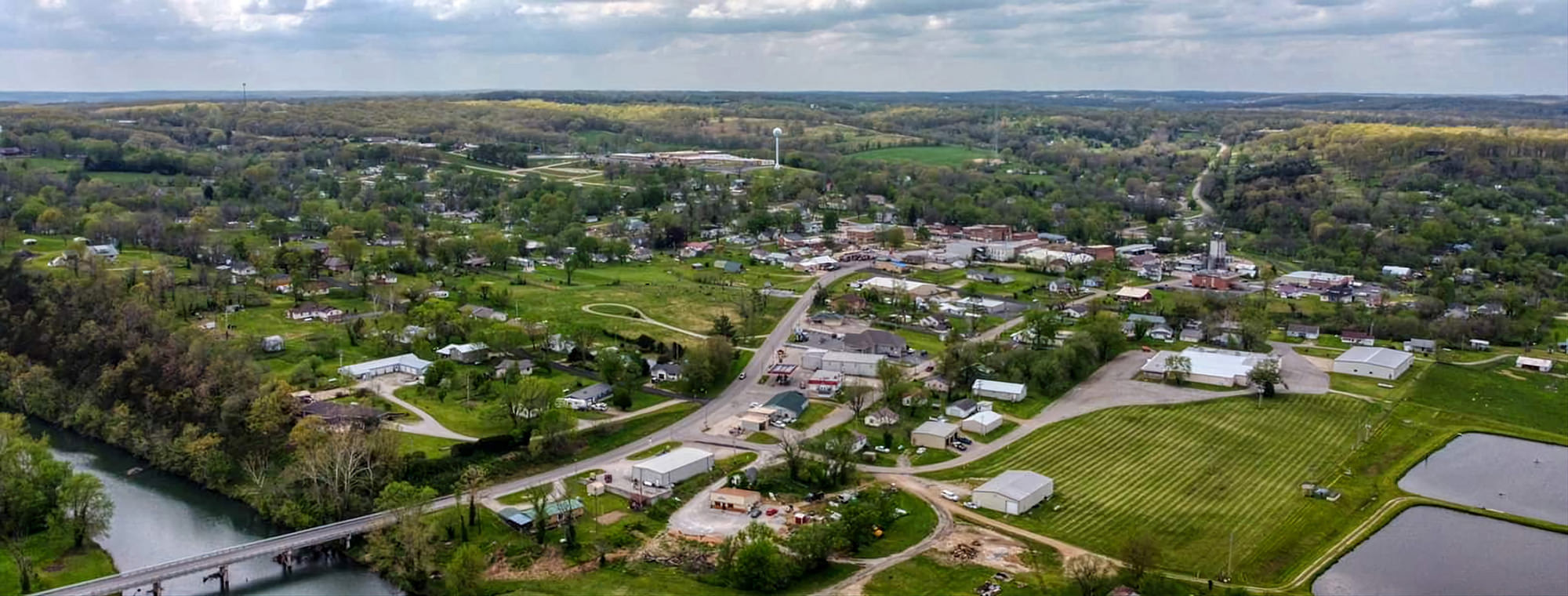The United States has a new center of population, and NOAA will mark the spot in the Ozark Mountains later this fall. We are inviting everyone to learn about the science behind this effort.
This past fall, the Census Bureau announced the 2020 U.S. Center of Population, which they describe as a point where an imaginary, flat, weightless and rigid map of the United States would balance perfectly if everyone were of identical weight. This point represents the average location of where people in the United States live. In 2020 the location was Hartville, Missouri, a town of less than 600 people. NOAA’s National Geodetic Survey will compute the exact longitude and latitude of the commemorative mark of the 2020 center of population. The commemorative survey mark is designed to be stable for many decades to come, if not centuries, and the location will become part of the larger reference system.
Surveyors rely on the foundational positioning framework provided through geodesy, and their work is essential to modern commerce. When you see someone at a construction site or the side of a road peering into complex optical devices perched on top of a tripod, you are seeing someone surveying, and benefiting from geodesy. The precise measurements they gather help us navigate the Earth (on the land, the sea, and in the air) in an efficient, economical, and predictable way.
It's challenging, though, because the Earth isn’t a big ball, it is irregular and elliptical in shape. To make useful measurements of this not-so-perfectly round spinning sphere, scientists have to understand the way it curves, and all of the features across its surface, like mountains and oceans. They also need to calculate the slight changes in its gravity field over time and land movements.
“When you try to measure the distance from one place to another in a small area, you can mostly pretend it’s all made of flat surfaces,” says Galen Scott from the National Geodetic Survey division of NOAA. “But for larger distances, you have to account for the curvature of the Earth, and that’s when it gets complicated.”
In the past, geodesists assigned coordinates — similar to unique address points — to various locations by using Earth-based surveying tools to measure distances between locations. Now they use space-based tools like the Global Positioning System (GPS). Consistency is key; NOAA oversees the National Spatial Reference System, which is used throughout the United States and territories and ensures that everyone is working from the same coordinates.
This fall the people of Hartville will celebrate this new reference point by having a bit of a party to show off the “center” of America. We will share details when they become available.
This is the fifth time in a row that the center of population has fallen in Missouri. Movements were particularly large in years when new states entered the union. NOAA and Census have partnered on this kind of commemoration every ten years since 1960.
Recording population movement and numbers can help with distribution of congressional districts and planning for the allocation of government resources and infrastructure needs over time. Combining the count of people with long-distance measurements provides democracy with important tools.
“Geodesy is foundational to understanding Earth,” Scott says.
 An official website of the United States government.
An official website of the United States government.


Social